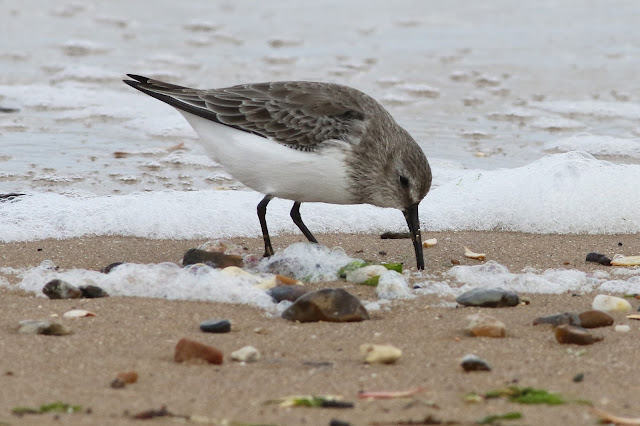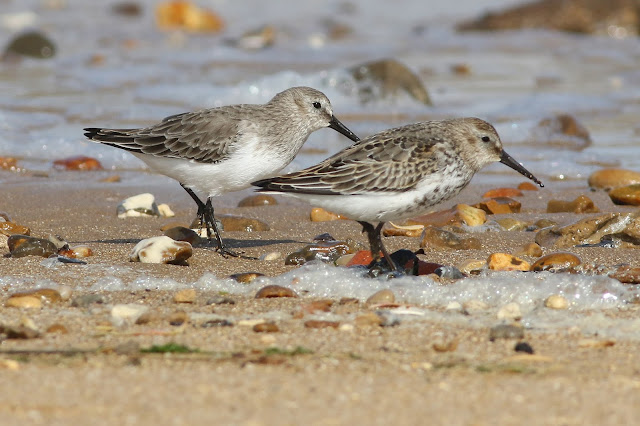17th September 2020
I was hoping that two days of north-easterly winds might have brought in some Yellow-browed Warblers but the bushes down the escarpment were desperately quiet. In fact the only photographic subjects on show were a handful of dragonflies, with only Common Darters and Migrant Hawkers still on the wing.
Down by the John Weston Reserve a Juvenile Kestrel was sitting on a fence post surveying the area.
It then flew on to the sea wall, sitting in the grass half way up the slope. I started taking photographs edging closer as I went but the bird was seemingly totally oblivious to my presence. I got ready for some flight shots as some dog walkers were coming the other way on top of the bank, but it allowed them to walk past just feet away with only a glance upwards to make sure they had gone. Eventually I was just 6 yards away and couldn't get it all in the frame. Why can't all birds of prey be like that?
Now on to the beach and we were greeted by several large clumps of Sea Stock. I assume this is quite common around the coast but I only seem to see it here.
A couple of juvenile Sandwich Terns were still hanging on before their epic journey south, and a single juvenile Mediterranean Gull was hanging out with the Black-headed Gulls.
I have been on the beach here a few times now but this was the first time I have seen Bar-tailed Godwits. Just four birds but they did add a bit of variety.
Surprisingly the scarcest wader on the beach was the Dunlin with just two birds seen all day.
Turnstone were present in good numbers, probably as many as fifty, all feeding on the tide wrack at the top of the beach. However what was different today was that instead of turning the seaweed over with their bill they were using their head as a bulldozer, apparently very effectively.
But the commonest bird on the beach today was one of my favourites, the silver Sanderling. They are so photogenic, that is when they stay still long enough.
What was different today, however, was that as well as scurrying around after food at the water's edge, they were joining forces with the Turnstones on the tide wrack and appeared to be finding more food here.
And after all that effort feeding it is time to soak in the bath before having a good flap to dry off.






















































No comments:
Post a Comment
Note: only a member of this blog may post a comment.